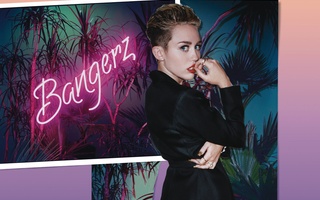“Your mother is not your mother. Your father is not your father. Your friends are not your friends,” says the voice from a rotating record in the final scene of “punkplay.” Alone and desperate, kindred spirits Mickey (Matt J. Bialo ’15) and Duck (Mark J. Mauriello ’15) come together to form a band, zoo sluts, and immerse themselves in punk counterculture, hoping to find a niche for themselves as they struggle to navigate through their teenage years. Gregory S. Moss’s “punkplay,” directed by Jacob A. Brandt ’14 and running through March 2 in the Loeb Ex, is heavy in testosterone and crude language, yet surprisingly sensitive and insightful as it details a misfit’s quest for individualism in an era built on conformity.
The emotional core of the play is the chemistry of its leads, Bialo and Mauriello. Mauriello’s character, Duck, is thrown out by his father for his refusal to go to military school. Mauriello portrays his character as flamboyant and outrageous, spitting in the face of authority with his dyed hair and smudged eyeliner. It would be easy for Mauriello to overwhelm Bialo, whose character is less physically arresting and whose development is much more subtle, but instead, the two act as perfect foils.
At the emotional climax of the play, Mickey and Duck must confront their rapidly changing bond: in a typical high school scene, Duck betrays Mickey in an effort to look cool for the town’s resident punk idol (Christian N. Fohrby ’14 ). Duck and Mickey engage in a fistfight that quickly alternates between a romantic slow dance and a progressively violent brawl. The entirety of the play takes place on roller skates, and in this scene, Bialo and Mauriello skate around each other figuratively and literally as they grapple with the different facets of their relationship.
The leads’ constantly shifting rapport and the underlying franticness of the play’s punk-tinged edges are enhanced by the clever lighting design of Alexandra M. Kiley ’15 and Anna G. Kelsey ’14. The play appears as a series of vignettes strung together by the lighting, which provides seamless transitions between the scenes. Flashing in a dizzying array of red and blue, the lighting is coupled with punk music and teenage head-banging as weeks and months blend together. Without the lighting, the play would fall apart; it compresses time in a way that contributes to the play’s sharp and caustic tongue as well as its sporadic nature.
Brandt manages to bring out the inner struggle of the characters throughout the play, which is at its core a coming-of-age story. He communicates the theme of the play particularly well in Mickey’s dream sequence, which opens with a talking chair, a body of Mickey’s paramour Sue Gici (Lily R. Glimcher ’14) with the head of Ronald Reagan, a pedantic clock, and a picture of Jesus Christ. In less than nimble hands, the scene would be an incoherent mess, but Brandt manages to create a sense of order by using windows to frame the elements—a picture of Jesus Christ in one, which represents Mickey’s consciousness, and a clock in the other. Against the backdrop of the flashing lights, the scene becomes a perverse confessional hearing, a unique dramatic feat thanks to the successful partnership between director and lighting designers.
The play conveys a distinct feeling of intrusion through Brandt's set design. All of the action takes place in Mickey’s room, enclosed by three walls. Scenes that take place outside of the room are never actually seen; rather, they seem to seep in through the doors. Despite Mickey and Duck’s attempt to break free from the shackles of society through their immersion in punk, they find themselves stuck in a self-imposed cage—the conformity of the punk scene, signified by the claustrophobic set. It feels ironic that the set design places the two teenagers in the center of the action, when they try so hard to stay on the periphery of society.
Brandt’s production of “punkplay” manages to comment on a larger theme even as it incorporates unconventional scenes, non-standard props like roller skates, and a limited set where the action takes place. In the end it is the idea of personal identity and counterculture in the ’80s that emerge as the strongest parts of the production.
—Staff writer Neha Mehrotra can be reached at nehamehrotra@college.harvard.edu.
Read more in Arts
Wincing with the Stars: Oscars 2013Recommended Articles
-
The Harvard Band: After Today, What?THE LAST time that the Harvard Band was arrested for disturbing the peace, New Haven residents were overly upset at
-
DR. SULLIVANWith the irrationality of a peeved child, and his characteristic perversity in misjudging issues, Mickey Sullivan has been throwing mud
-
 Brilliant Projectors Animate ‘George’
Brilliant Projectors Animate ‘George’ -
Hair"Hair" comes to the Loeb Ex April 26.
-
"punkplay" Looks at Teenage AngstFebruary 22-24, February 28-March 2
-
 Like a Wrecking Ball: Miley Cyrus at Harvard
Like a Wrecking Ball: Miley Cyrus at Harvard













